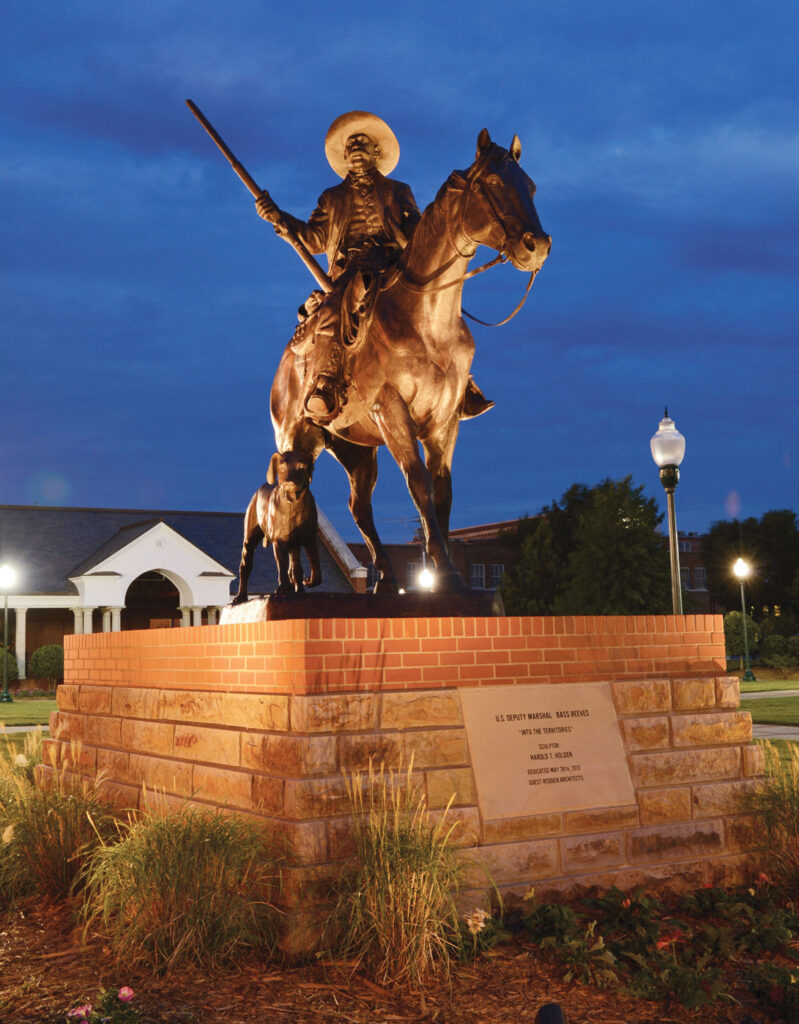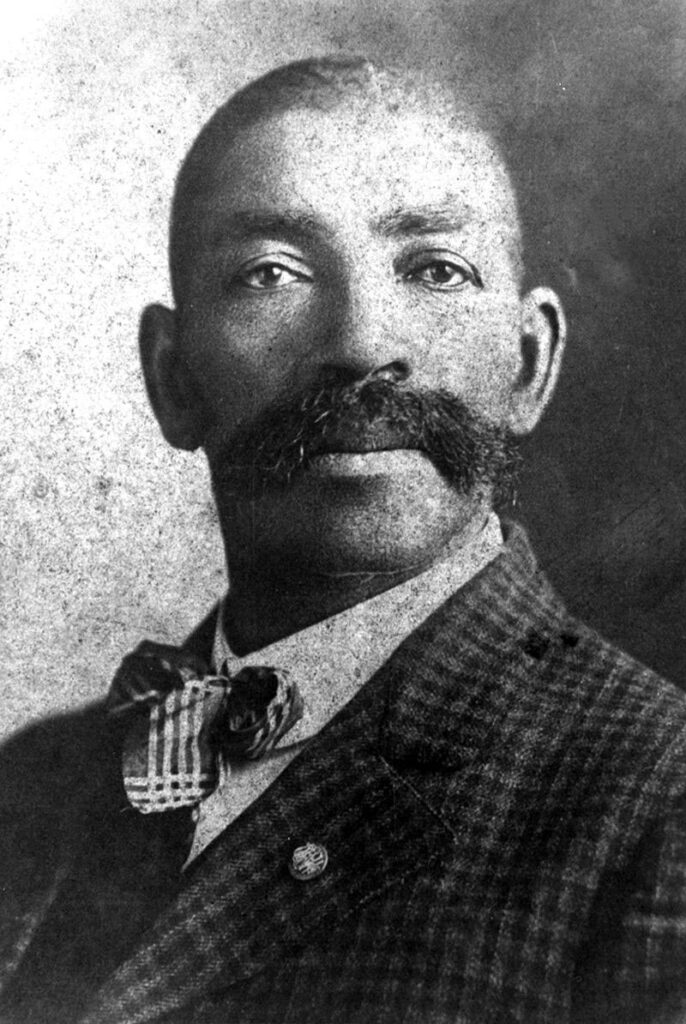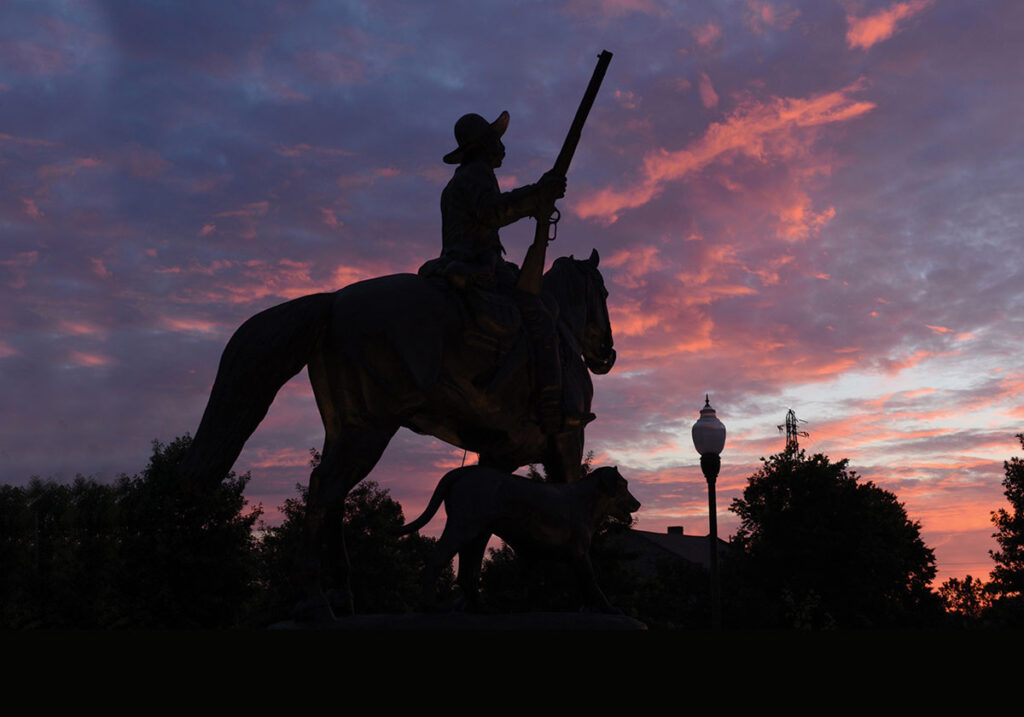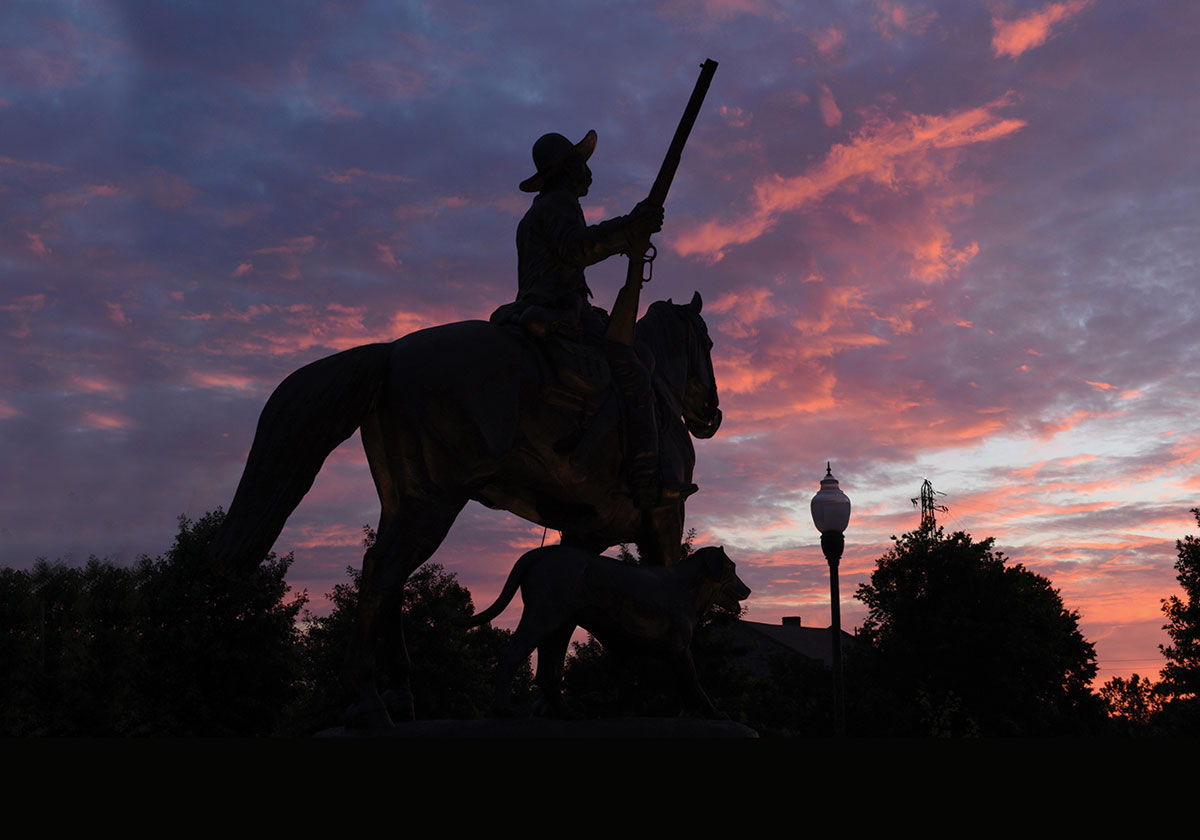
25-foot tall, bronze statue memorializes Bass Reeves in Fort Smith, Ark.
FORT SMITH, ARK. – Park Ranger Cody Faber has seemingly heard every story surrounding the life and times of Bass Reeves. Ever since the monument to the former lawman was hoisted up in downtown Fort Smith, Ark. Cody has been asked numerous questions concerning the life of one of the most feared lawmen to ever put on a badge.

Unfortunately, Cody has found himself correcting many of those tall tales. As a park ranger, Cody is also a historian and he wants to make sure visitors to the Bass Reeves monument get the correct story.
At the top of Cody’s list of frustrating myths is the notion that the Lone Ranger character was based on Reeves. He gets asked about this more than anything else.
“A lot of folks will come to us with stories they have heard. I have to gently burst that bubble. Because as a Park Ranger, I’m here to deal with facts, not myths,” Cody said.
Cody said it wasn’t because he wanted to downplay the significance of Reeves. In fact, it’s the opposite. Cody believes the real story of Reeves doesn’t need embellishment and is more amazing than any script Hollywood could produce.
“My job is to deal with facts and things I can prove. We get these stories and we want to believe them. I get that,” Cody said “However, it has nothing to do with trying to prove Bass is not the Lone Ranger. In actuality, Bass Reeves doesn’t want to be the Lone Ranger. The Lone Ranger wishes he was Bass Reeves. He is way cooler than the Lone Ranger ever could be.
“We are doing him a disservice by making stuff up.”
Born into slavery in 1838, Reeves was the property of Arkansas state legislator William Steele Reeves. After he was forced to follow his master’s son into the Civil War on the confederate side, Reeves escaped into Indian Territory and later returned to join the Union Army.
When the Civil War ended, Reeves took up farming until 1875. He then took a job as a deputy U.S. Marshal under District Judge Isaac C. Parker’s court in Fort Smith. The territory stretched more than 75,000 square miles.
“He is a man that was a slave, and within 10 years, he is going to do a job that literally puts him on the same team with ex-confederate soldiers,” Cody said. “Yet, he is serving beside them and he, along with many others, are putting the country back together.”
For 32 years, Reeves worked throughout the Indian Territory (now Oklahoma), Arkansas and Texas. He was credited with more than 3,000 arrests. That includes bringing in his own son, Benjamin Reeves, for killing his wife.
Despite not being able to read, Reeves was known for his ability to memorize the warrants of the felons he was chasing. He also had a talent for using disguises and was an expert with a Colt pistol and Winchester rifle. He is credited with killing 14 men in the line of duty. That includes an infamous 1883 shootout with a killer named Jim Webb in present-day Woodford (Okla.).
Reeves was deputy Marshall until 1907, the same year Oklahoma became a state. He was 67 years old. He served two years as a police officer in Muskogee, Okla,. before he died in 1910 at the age of 71.
Reeve’s exploits took on legendary status. His name was known throughout the West as a dedicated marshal that outlaws didn’t want on their trail.
“He is a man that was a slave, and within 10 years, he is going to do a job that literally puts him on the same team with ex-confederate soldiers. Yet, he is serving beside them and he, along with many others, are putting the country back together.”
— Cody Faber
However, over time, unlike other western icons, Reeve’s name was lost to the history books. While contemporaries such as Wyatt Earp, Pat Garrett, Wild Bill Hickok and Bat Masterson took on iconic status and were featured in books, magazines, TV shows and films throughout the decades, Reeves was nearly forgotten.
From 1900 to 1950, telling the story about a black man arresting white men in 19th-century America wouldn’t go over real well, according to Cody.
“I think probably the No. 1 reason is because he is African-American,” Cody said. “That doesn’t have anything to do with us now. We’re very open as far as talking about things now. But you have to remember, so much of the stories that were brought up and told and repeated in everything from dime-store novels to books that were written post-19th century, a lot came from newspaper clippings. And we’ve seen that there is evidence that Bass was involved in things and you never saw him mentioned. So there wasn’t that mythology or legend of him at the time that could be told later.”
It hasn’t been until recently that Reeves’ name has made its return to the public consciousness. Books and TV shows have been put forth about Reeves and his exploits as a marshal and people began to take notice.
This led to Fort Smith erecting a bronze statue of Reeves on May 26, 2012 at Ross Pendergraft Park. Harold Holden out of Norman, Okla. sculpted the 25-foot tall, bronze statue It depicts Reeves riding horseback, with a rifle in his hand, and a dog at his side.
It took a total of five years to complete and the cost was more than $300,000 and funded entirely by donations.
Cody was one of the more than 1,000 people who were on hand the day the statue was unveiled and remembers vividly when the cannon was shot as it was uncovered.
“When people come, they have probably heard the myths, but they are interested in learning more about him. That’s great,” Cody said. “If they will sit down and talk with me or go to the statue and read the information by the statue, take pictures with and tell these amazing stories. He is a wonderful representative of the U.S. court system there at Fort Smith, not to mention the marshal service which he is a wonderful representative of, but of humankind as well.”








